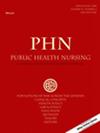亚洲的技术灾害:2000 年至 2021 年的流行病学概况
IF 1.7
4区 医学
Q2 NURSING
引用次数: 0
摘要
背景亚洲的技术灾害对公共卫生和环境有重大影响,但对这些事件的流行病学分析却很有限。本研究旨在描述 2000 年至 2021 年亚洲技术灾害的流行病学概况,重点关注发病率和死亡率趋势。方法利用紧急事件数据库(EM-DAT)、DesInventar、NatCAt 和 Sigma 中的数据进行回顾性描述观察分析。研究将灾害分为交通事故、工业事故和其他事故。结果从 2000 年到 2021 年,亚洲共发生了 2333 起技术灾害,其中交通事故最为频繁(55.77%),其次是工业事故(26.10%)和其他事故(18.13%)。总体趋势表明,这些灾害的发生频率以及平均死亡率和受伤率在统计意义上显著下降。研究强调了不同类型灾害的不同影响,工业事故造成的死亡率和受影响率最高,尽管其发生频率低于交通事故。然而,工业事故的严重影响突出表明,有必要制定有针对性的预防战略。本文章由计算机程序翻译,如有差异,请以英文原文为准。
Technological disasters in Asia: Epidemiological profile from the year 2000 to 2021
BackgroundTechnological disasters in Asia have significant public health and environmental implications, but there is limited epidemiological analysis of these events. This study aims to characterize the epidemiological profile of technological disasters in Asia from 2000 to 2021, focusing on morbidity and mortality trends.MethodsA retrospective descriptive observational analysis was conducted using data from emergency events database (EM‐DAT), DesInventar, NatCAt, and Sigma. The study categorized disasters into transport, industrial, and miscellaneous accidents. Statistical analyses were used to examine frequencies, trends, and correlations among the different disaster types.ResultsFrom 2000 to 2021, Asia experienced 2333 technological disasters, with transport accidents being the most frequent (55.77%), followed by industrial (26.10%) and miscellaneous accidents (18.13%). The overall trend showed a statistically significant decrease in the frequency of these disasters and in average mortality and injury rates. The study highlighted the varying impact of different disaster types, with industrial accidents causing the highest fatality and affected rates despite being less frequent than transport accidents.ConclusionsThe study indicates a declining trend in the frequency and severity of technological disasters in Asia, reflecting improved safety measures and disaster management. However, the high impact of industrial accidents underscores the need for targeted prevention strategies.
求助全文
通过发布文献求助,成功后即可免费获取论文全文。
去求助
来源期刊

Public Health Nursing
医学-公共卫生、环境卫生与职业卫生
CiteScore
3.50
自引率
4.80%
发文量
117
审稿时长
6-12 weeks
期刊介绍:
Public Health Nursing publishes empirical research reports, program evaluations, and case reports focused on populations at risk across the lifespan. The journal also prints articles related to developments in practice, education of public health nurses, theory development, methodological innovations, legal, ethical, and public policy issues in public health, and the history of public health nursing throughout the world. While the primary readership of the Journal is North American, the journal is expanding its mission to address global public health concerns of interest to nurses.
 求助内容:
求助内容: 应助结果提醒方式:
应助结果提醒方式:


